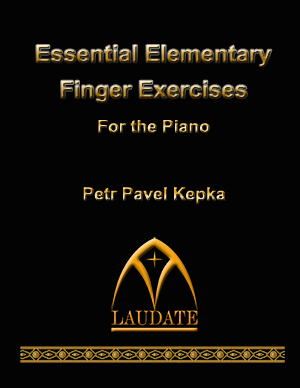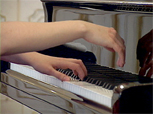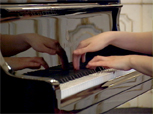
As a piano teacher, I am always looking for new and more effective piano exercises for my students. I have tried a lot of finger exercises written by Bauer, Berens, Bertini, Brahms, Bergmüller, Concone, Cramer, Czerny, Dohnányi, Döring, Duvornoy, Gurlitt, Hanon, Heller, Herz, Hutcheson, Kohler, Kullak, Kovacs, Le Couppey, MacFerren, Maylath Moszkowski, Philipp, Pischna, Plaidy, Safonoff, Schmitt, Schulz, Stamaty, Streabbog, Wieck, Zoltan, and others, but I have not been able to find an elementary finger exercises book for beginners that would exactly suit my purpose. Hanon’s or Schmitt’s finger exercises are on white keys only, and if you modulate to other keys, they are still very static on selected keys. Dohnányi’s, Pischna’s and others are essential exercises for more advanced pianists, which are not suitable for elementary level students. After three weeks of hard work, I gave myself a birthday present on May third: I made myself put all my ideas on paper and use my forty years of experience to write my
Essential Elementary Finger Exercises.
The purpose of this book is to teach piano beginners to
1) keep their fingers inside the keyboard, just in front of the black
keys.
2) Then reach with their fingers the black keys without any
movement of the wrist or forearm.
In 220 finger exercises, the first and the fifth finger stay on the same keys, while allowing the other fingers to dynamically reach black and white keys in every measure.
My Essential Elementary Finger Exercises has two parts:
1) In the first part, both hands move in a parallel fashion.
2) In the second part, both hands move in an opposite direction,
which is often overlooked by others that write elementary finger
exercises.
Students should always practice the first measure of the same exercise from both parts of the book (for example, exercise number 2 from part one and part two). After they master the first measure, students continue to the rest of the exercise with no movement of the wrist or forearm in any direction. Only the fingers reach for the black keys and then slide back onto the white keys. For illustration, please review my finger exercises video.
Note: I find the first part of my finger exercises book very musically stimulating when moving from the church, minor, Spanish, major, Arabic and other scales. The second part is very demanding on the students’ ears but very useful. I hope that you will have fun with these essential elementary finger exercises as I have had to composing them.


